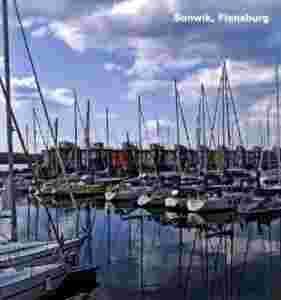|
 |
Autor: Manfred Sack
Wydawnictwo: Edition Axel Menges; Bilingual edition
Data wydania: 12 Sep 2007
Ilość stron: 70
Wymiary książki: 1.1 x 28.2 x 30.3 cm
Rodzaj okładki: Hardcover
ISBN-13: 978-[zasłonięte][zasłonięte]25656
978-[zasłonięte][zasłonięte]25656A
This text is available in English and German. Shortly after the navy had given up its Flensburg Fjord base, a group of developers acquired the site which comprises 7 hectares of land and 5.5 hectares of water. The group developed an urban quarter here and called it 'Sonwik', from the north Frisian words 'Son' (sun) and 'Wik' (bay). Its principal attraction is a housing estate, unique in Germany, which consists of 20 water-houses painted in vibrant colour. They are placed in loose series on a right angle by a jetty, at the same time forming the outer framework for a large marina for 400 sailing boats and yachts. Most of the former navy buildings on the wide green promenade have now been converted for civilian use - under the eyes of the monument-protection authorities and with great skill and sensitivity. The red brick buildings date from the first third of the 20th century, and now accommodate apartments, offices, shops, cafes and businesses related to water sports. The row of buildings is about 500m long, and is complemented, in urban development terms, by two taller buildings that at the same time mark the unmistakable entrance to this attractive site. They were designed by the Hamburg architects APB, who won the competition for them. However, the special feature are the 20 houses standing in the water, designed by the Flensburg practice of Asmussen & Partner. Each of them was built on a reinforced concrete platform placed about 2m above water level, using a two-storey timber-post structure. The owners were able to structure their own floor plans and equally - following a canon established as a matter of principle - the size and position of some windows. In addition to the roof terrace and private mooring 'cellar', the striking characteristic of these buildings are their colours - red, blue, orange and yellow - which are visible from a great distance.
|
|

